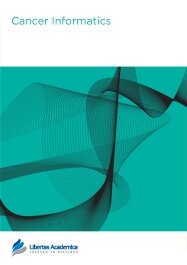

Publication Date: 26 Jan 2015
Type: Review
Journal: Cancer Informatics
Citation: Cancer Informatics 2014:Suppl. 7 67-75
doi: 10.4137/CIN.S16351

Modeling signal transduction in cancer cells has implications for targeting new therapies and inferring the mechanisms that improve or threaten a patient's treatment response. For transcriptome-wide studies, it has been proposed that simple correlation between a ligand and receptor pair implies a relationship to the disease process. Statistically, a differential correlation (DC) analysis across groups stratified by prognosis can link the pair to clinical outcomes. While the prognostic effect and the apparent change in correlation are both biological consequences of activation of the signaling mechanism, a correlation-driven analysis does not clearly capture this assumption and makes inefficient use of continuous survival phenotypes. To augment the correlation hypothesis, we propose that a regression framework assuming a patient-specific, latent level of signaling activation exists and generates both prognosis and correlation. Data from these systems can be inferred via interaction terms in survival regression models allowing signal transduction models beyond one pair at a time and adjusting for other factors. We illustrate the use of this model on ovarian cancer data from the Cancer Genome Atlas (TCGA) and discuss how the finding may be used to develop markers to guide targeted molecular therapies.
PDF (1003.34 KB PDF FORMAT)
RIS citation (ENDNOTE, REFERENCE MANAGER, PROCITE, REFWORKS)
Supplementary Files 1 (31.60 KB ZIP FORMAT)
BibTex citation (BIBDESK, LATEX)
XML
PMC HTML

Publishing in Cancer Informatics was the fastest publication I have ever experienced and has received the highest viewing rate. So it is a great place to publish your very latest research.
Facebook Google+ Twitter
Pinterest Tumblr YouTube